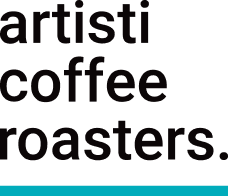Q: Why is everyone talking about the price of coffee lately?
A: It seems like the price of a cup of coffee is a hot topic right now, with even the media weighing in. For some reason, coffee is getting singled out when there are plenty of other things that have seen price increases too. But let’s focus on what’s behind rising coffee costs and whether it’s okay to raise your prices.
Q: What factors influence the price of a cup of coffee in a cafe?
A: Many things contribute to the price of a cup of coffee. It’s not just about the coffee beans – there’s the milk, the cup, the lid, and all the running expenses of the cafe, like electricity, water, and rent (which varies by location). On top of that, wages have increased, and we want to pay for good service. Cafes also need to make a profit, so when you hear complaints about coffee prices going up, keep in mind that these cafes are likely cutting into their profit margins just to stay afloat.
Q: Is it fair to compare coffee prices to other products?
A: Yes! Think about it – everything else is going up too, like beer at the pub or bread at the supermarket. If we’re willing to pay more for those, we should be willing to do the same for coffee. Especially since not all coffee is created equal. The quality of the coffee, the machines, and the barista’s skill all play a role in the price you pay.
Q: Should coffee prices reflect the quality of the cafe’s offerings?
A: Absolutely. If a cafe invests in better coffee machines, higher-quality beans, and well-trained baristas, it’s reasonable to expect a higher price. A good barista is worth more money, and as a customer, you should be willing to pay for that expertise and quality. It's a fair exchange for a better coffee experience.
Q: What are the pros of increasing coffee prices in your cafe?
A: Raising prices can help you increase profitability, which is crucial for running a sustainable business. It also gives you the opportunity to reinvest in your cafe – whether that’s hiring more staff to handle rushes or upgrading equipment. Additionally, being a premium offering can actually attract customers who are willing to pay more for a better experience. Higher prices can signal that you offer higher-quality products and service.
Q: How do you stay ahead of inflation in the coffee business?
A: Get ahead of price increases before inflation eats into your margins. While many businesses adjust their prices based on fluctuating costs (like fruit and vegetables), cafes tend to keep their prices stable for longer periods. If your costs are rising and you’re not adjusting your prices, you’re cutting into your profits. So, make small, regular price adjustments that align with your rising costs.
Q: Why shouldn’t you compare your prices with other cafes?
A: Every cafe operates differently. If your cafe uses higher-quality ingredients, better equipment, or offers superior service, your prices should reflect that. Comparing your prices to cafes that may cut corners on quality isn’t fair to you or your business. Do the research and understand your true costs to ensure your prices align with the quality you’re offering.
Q: What are the challenges of raising coffee prices?
A: One of the biggest challenges is customer backlash. When regulars notice the price has gone up, they might push back. However, this reaction is often short-lived and not as widespread as you might fear. Customers are aware that the cost of living is going up everywhere, and coffee isn’t an exception.
Q: How can you handle customer concerns about price increases?
A: Be transparent and clear about why the prices are going up. Reassure customers that you’re not price gouging but rather adjusting prices to keep up with rising costs and to continue providing a high-quality experience. Explain that you’re reinvesting in the business, improving staff training, or upgrading equipment to make the cafe even better. This can help customers understand that the price increase is for their benefit too.
Q: What are some practical ways to raise prices without losing customers?
A: First, don’t wait until you’re in a tight spot. Gradual, smaller price increases are more manageable for customers than one large jump. For example, a 10-20 cent increase is less likely to shock customers than a 50-cent or $1 jump. Also, communicate in advance. A simple sign at the counter or a friendly conversation with regulars can soften the impact. Let them know why the prices are going up and give them time to adjust to the idea.
Q: What’s the best way to communicate a price increase?
A: Start communication a couple of weeks in advance with a small sign at the point of sale that explains the upcoming change. For example: “Dear customers, we appreciate your support and look forward to continuing to serve you after a small price increase of 20 cents starting on [date].” On the day of the price change, update the sign to reflect the new prices. Keeping the communication light and transparent can go a long way in maintaining customer loyalty.
Q: How can you keep customers happy despite raising prices?
A: Even though prices are going up, you can improve the customer experience at little or no extra cost. Train your staff to step up their service, introduce new menu items, or make small improvements in how the cafe runs. When customers see that the price increase is accompanied by added value, they’re more likely to accept it.
Need more help and advice? Get in touch here.

















